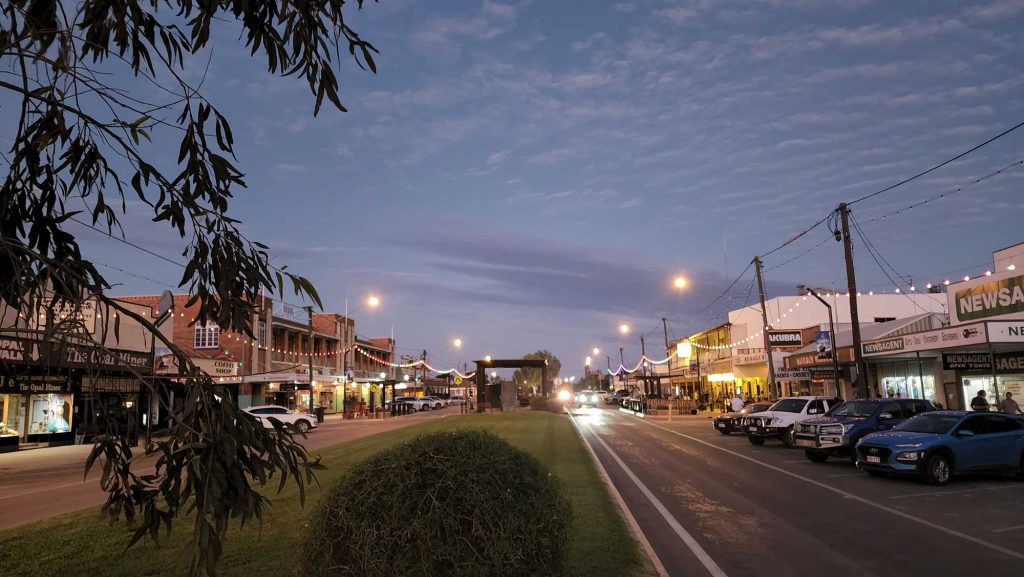“A gigantic political fraud had been perpetuated on this district”
There was once a strong belief, ‘inevitable,’ Queensland would be divided into 3 states prior to Federation, in 1901. A belief not seemingly shared by the power brokers in Brisbane, despite the size of the state, poor location of the capital and the wishes of the constituents, north of Bundaberg.
“… but I think no one, but a fool, could have any doubt as to the Government meaning to pass the railway if it can. In fact, it is simply the price that the Brisbane political party is paying the Townsville party for its apostacy to Separation.” So said in 1895, by a future Premier of Queensland, William Kidston, in Rockhampton, on the proposed extension of the Great Northern railway line from Hughenden to Winton.
Was the settlement, originally called Pelican Waterhole, a small, way out west, wool town, in 1889, a strategic pawn in Brisbane’s game plans to keep Queensland whole and it, as its capital city?
Rail, in the late 19th century, was the instrument to develop and connect the state. Notably east to west first, with the building of 3 main lines, starting from Brisbane, Rockhampton, and Townsville. These ‘trunk’ lines, respectively called, the Western, Central Western and Great Northern. The Central West steel tentacles spreading from Rockhampton west, over the Drummond Range, to Longreach, with branch lines to Mt. Morgan, Springsure, Clermont, and Yaraka in 1917.
Wool, beef, minerals, settlement were the main drivers for the western routes. Getting the western resources back to a deep-water port quicker, then ship them to the bigger markets, providing bigger paydays for customs collectors and owners. Rockhampton was one of the ports, along the Queensland coast, once considered ‘the only port of significance along the Central Queensland coast,’ and along with the gold from Mt. Morgan, rail provided an important revenue stream and job generator, for the town with lofty ambitions.
Once the rail line reached Longreach in 1892, the then Wool Capital of the World, the next logical extension was arguably, economically and terrain wise, north-west to Winton, another important wool producing area, just 179 kilometres away, and within the northern border of the ‘inevitable’ separate state of Central Queensland. Making the port of Rockhampton (Port Alma) even more important in terms of the value of the product shipped out from it. And, of course the town wealthier and more influential.
But in 1899, Winton was first connected by 212km’s of rail from the northern Queensland town of Hughenden, with Winton’s wool and passengers being transported to the port of Townsville on the Great Northern Line. Did, the also ‘inevitable’ state of North Queensland, make a land (trade revenue) grab, some 100 miles within the Central Queensland border, effectively robbing Rockhampton of its ‘birthright’, or had Brisbane moved the chess pieces, making separation of the state less inevitable, by putting the 2 northern regions at loggerheads with each other!
“If the Government backed away from granting this railway to Townsville, the people there would get angry with it and go for Separation again. He was perfectly certain of this.” William Kidston.
The decision, for Winton to become the new terminus of the Great Northern line, certainly was not well received in Rockhampton, damaging their pride, future income stream and ambitions. Ambitions to be the grand capital of the state of Central Queensland. “A gigantic political fraud had been perpetuated on this district,” was the quote from the Mayor of Rockhampton, Sidney Williams, at a public meeting in 1889, rallying support for the Queensland parliament to vote against the proposed Hughenden to Winton rail line.
But as history showed, and George Barnsley Shaw said at this very meeting, “… he knew how utterly futile it was to expect anything like justice from Brisbane.” The Central Western Line did eventually extend from Longreach to Winton in 1928. Effectively connecting the Central Western Line with the Great Northern Line.
By this time the ‘inevitable’ separation of the state was now but a pipe dream. Federation, in 1901, had made separation nearly impossible, now needing the Queensland Parliament to propose and approve it, not the ruling Monarch in England.
How different might the land mass called Queensland be, if it was separated into 3 states in the 1890’s. One could argue that subsequent Central Queensland generations would have, across the board, being better off.
Did the western town of Winton, keep Queensland whole?
If I was living in Winton, I would certainly be adding that to its list of enviable honours, alongside its most famous, home of Australia’s unofficial national anthem, Waltzing Matilda.

